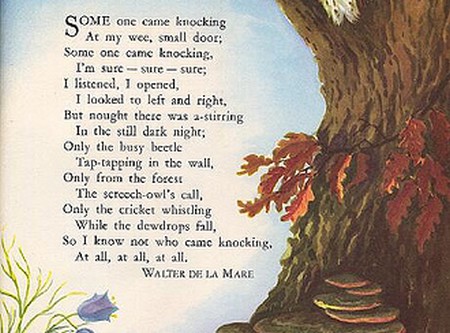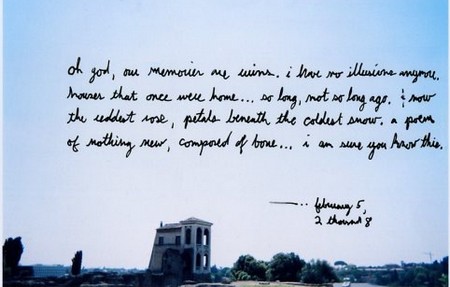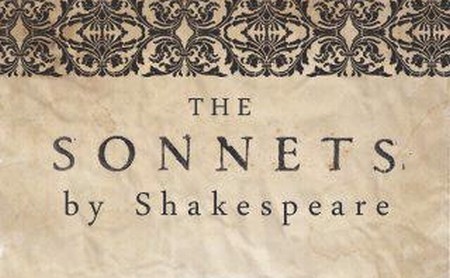Before considering different types of poems, it is important to know what actually poem is. A poem is a composition or arrangement of words written in verse or metrical feet, having a meaning and musicality. A poem is a literary creation with a number of literary features. A poem can either be a rhyming or non-rhyming literary piece. Poems are written in all the eras in one way or another and we have so many poetic treasures left behind by some of the great poets such as Shelly, Wordsworth, Keats, Frost and Shakespeare. No one can deny the fact that the poems they wrote are one of the finest verbal aesthetics and marvels which make us all to heave a sigh over the sheer excellence of expression of these literary brains. No doubt, the way they perceived the sublime facets of life in a unique way and conveyed the message with adorned with lexicon gems of poetry. Following are some of types of poems which will give you a good idea to understand the kaleidoscopic splendor or literary expression.
Fantasy Poems
As the name suggests, these are the poems which have nothing to do with the reality. It is totally the poet’s imagination or how he/she wants the things to be. The reader of such poems always wonder whether the subject presented in the poem has anything to do with real world or it is just a poet’s imagination. Fantasy poems can be related to anything as there are no limits for imagination. However, these poems often in the dark show us some real side of the human condition at that time.
Haiku Poems
Haiku poems are known as the oldest form of poem which belongs to ancient Japanese origin. It is popular for its small size, i.e. three lines in which the poet uses precise punctuation and syllables. There are 17 syllables in 3 lines in a sequence of five, seven and five. The subject of these poems is usually about the nature and that too about a particular season. A lot of effort is required to write a well directed, perfect haiku poem.
Metaphor Poems
A metaphor is a literary term which can be defined as, “it is a concept or pattern of understanding one thing in terms of others or equating two unlike objects.” In simple words, metaphor is an indirect comparison between two nouns which are apparently contrastive. The purpose of using metaphor in poems is to allow the reader to understand the truth in an indirect way which one cannot bear when said explicitly. Metaphorical poems unveil the vices in a society in an effective way.
Short Poems
Shorts poems are richer in its vocabulary than long poems because poet has to express its feelings in a minimum of words. Poets choose short poems as their stylistic choice or perhaps they want to convey their message and feelings in a more concise way. The poets, who choose short poems as a medium to convey their imaginations and feeling, choose every single word carefully as each and every word should convey a specific meaning related to the subject of the poem. Writing a short poem is often wearisome.
The Limerick
Though, taken as obscene poetic form most of the time, it is in fact not. This genre of poetry is usually written with a view of being witty and humorous. In doing so, poets often encourage to be lewd. The limerick has five lines with a rhyming scheme of AABBA.
The Sonnet
A sonnet is a well known poetic form which is written in iambic pentameter along with a patterned rhyme scheme. It has fourteen-lines. There are two major types of sonnet: the Italian or Petrarchan sonnet and the English or Shakespearean sonnet. The Petrarchan sonnet is given this name after Francesco Petrarch (1304-1374), an Italian poet. The sonnet was first introduced by Sir Thomas Wyatt (1503-1542) into the English poetry at the start of the 16th century. Its fourteen lines are divided into two stanzas: the first eight line stanza known as octave or octet with a rhyming scheme of ABBAABBA, or ABBACDDC; the second stanza contains six lines and called sestet with a rhyming scheme of XYZXYZ or XYXYXY. The Shakespearean sonnet was introduced by Henry Howard (1517-1547), an Earl of Surrey. This sonnet has three quatrains and a couplet with a rhyming scheme of ABAB CDCD EFEF GG.
Ghazal
A Ghazal is a form of poem with an odd numbered chain of couplets. Each couplet in a Ghazal is in itself an independent poem. Putting a comma at the end of the first line is pretty common in Ghazal. In Ghazal, there are a range of words usually one to three that repeat themselves and preceding them is an inline rhyme.
In Ghazal, the refrain and inline rhyme is prominent in first two lines and then every second line. The poet uses his/her pen name in the last couplet. Ghazal usually has a rhyming scheme of AA bA cA dA eA and so on.


